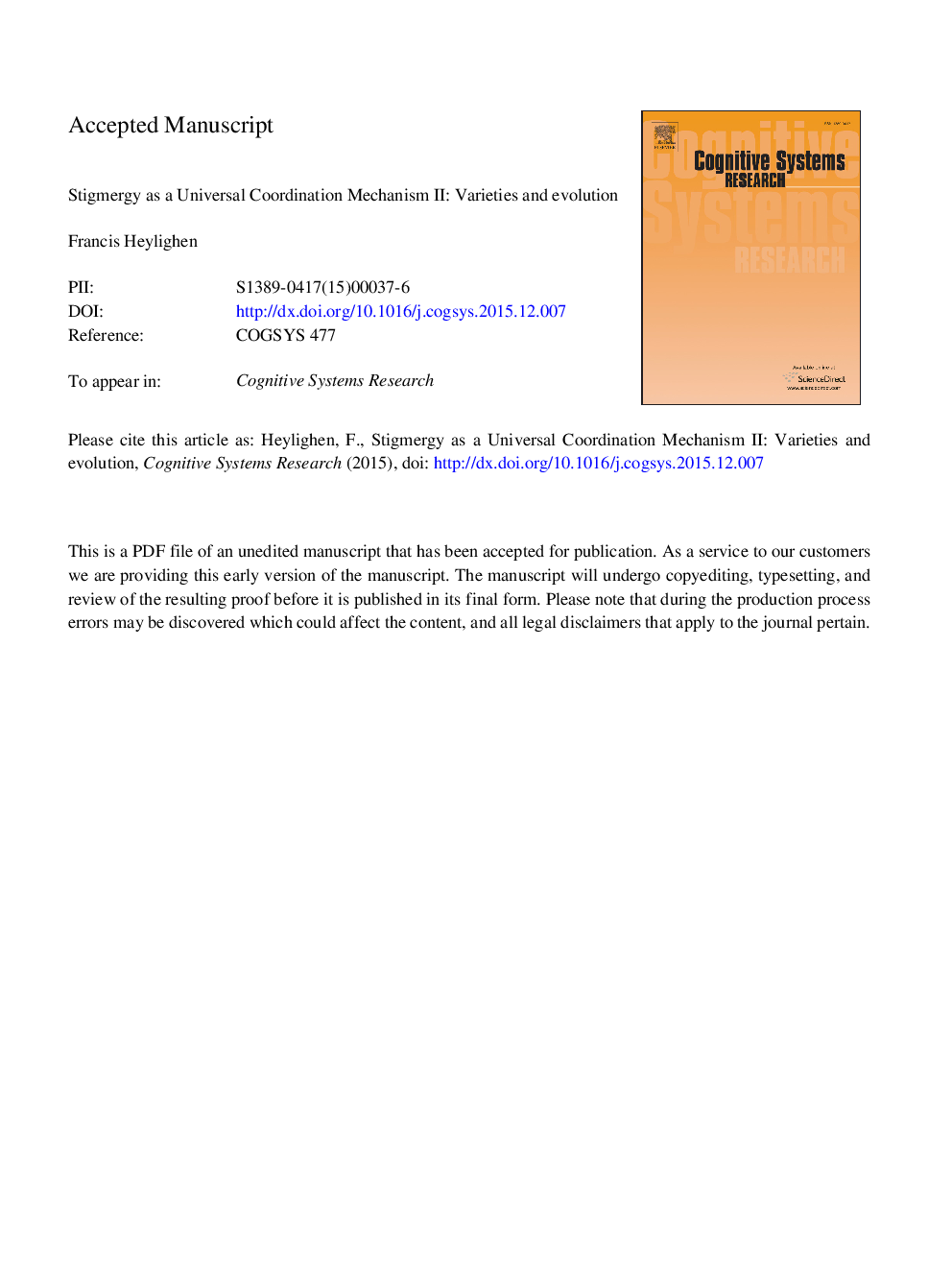| Article ID | Journal | Published Year | Pages | File Type |
|---|---|---|---|---|
| 6853848 | Cognitive Systems Research | 2016 | 33 Pages |
Abstract
The concept of stigmergy, a mechanism for the coordination of actions via the trace they leave in a medium, can explain self-organizing activities in a broad range of domains, including social insects, collaborative websites, and human institutions. The present paper attempts to bring some order to these diverse applications by classifying varieties of stigmergy according to general aspects: the number of agents involved, the relative persistence or transience of the trace, the use of sematectonic or marker-based traces, and the quantitative or qualitative characteristics of traces. The resulting cases are essentially continuous, as more complex cases can be understood as having evolved out of simpler ones. One application is cognition, which can be viewed as an interiorization of the individual stigmergy that helps an agent to perform a complex project by registering the state of the work in the trace, thus providing an external memory. Another application is the evolution of cooperation, in which agents learn to profit from the synergy produced by the spontaneous stigmergic coordination between their initially independent actions, thus bypassing the problem of “free riders” that exploit the cooperators' efforts.
Related Topics
Physical Sciences and Engineering
Computer Science
Artificial Intelligence
Authors
Francis Heylighen,
